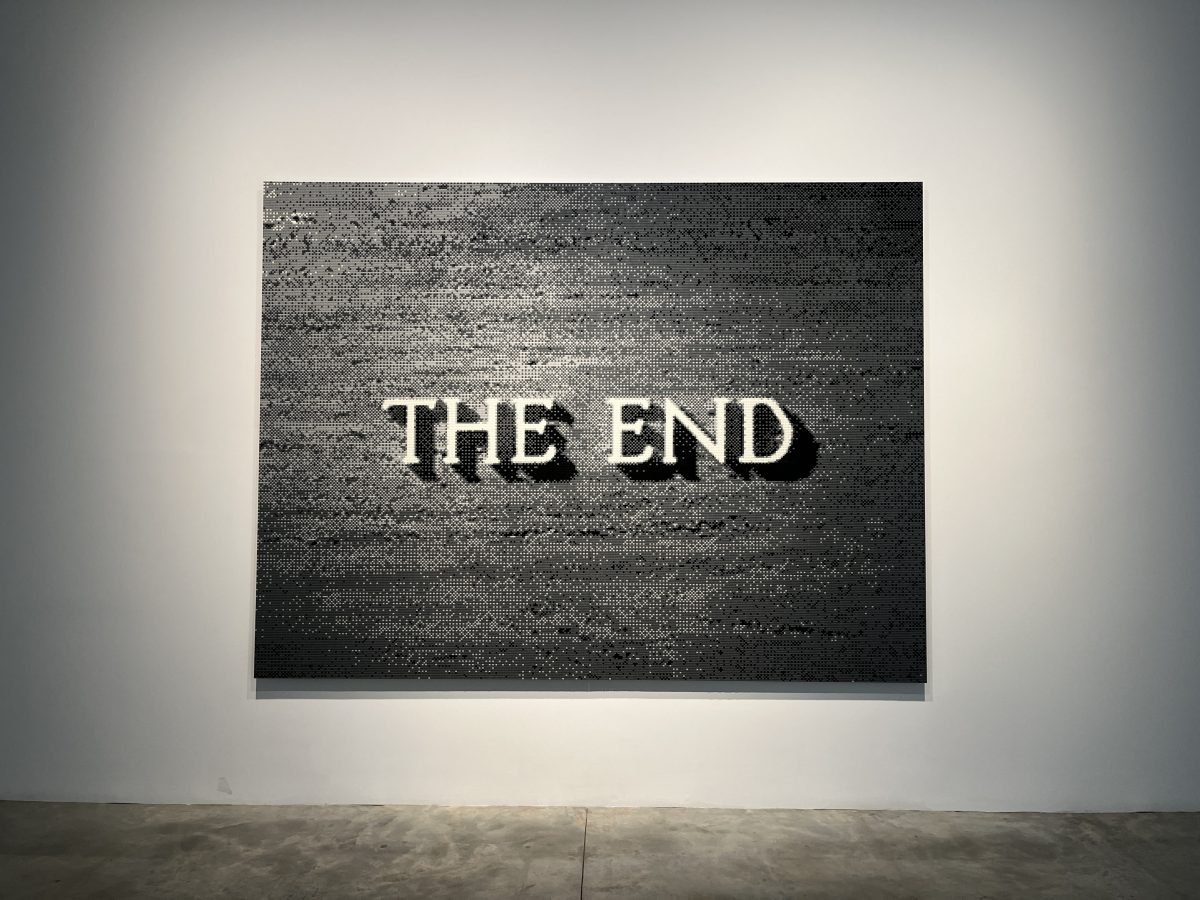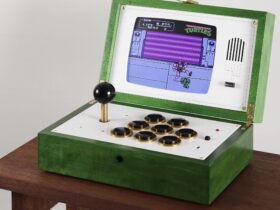All great empires rise gradually: stone after stone, wall after wall, fortress after fortress, war after war, plunder after plunder.
And when they fall, they don’t just disappear in a puff of smoke. They dissolve slowly and painfully: year after year, decade after decade, century after century, coup after coup, uprising after uprising.
“The End,” reads a large grayscale artwork at the entrance to Ai Weiwei’s exhibition What you see is what you see at Faurschou New York. It reproduces the closing frame of The great dictator (1940), Charlie Chaplin’s film parody of Adolf Hitler. With other pieces depicting the last American soldier to leave Afghanistan, the suspect Explosions of the Nord Stream pipeline of 2022, and a portrait of the tyrannized WikiLeaks founder Julian Assange, it becomes clear that we are looking at a devastating one indictment of the empire.

I almost forgot to mention that all the wall pieces in the show are made of toy bricks (LEGO and the Chinese equivalent WOMA). Tens of thousands of them were laid piece by piece, line by line, pixel by pixel, hand in hand.
Elsewhere in the exhibition, Ai a line-up of well-known Western art historical masterpieces, each with a catch. Emanuel Leutze George Washington wades his boat through the climate-induced glaciers in Delaware, while China looms in the background as the world’s next hegemon. On the right side of a colossal 650,000-brick version of Claude Monet’s ‘Water Lilies’, a mysterious, dark void recalls the time that both the artist and his father spent in Chinese gulags and prisons. In a Warholian interpretation of Leonardo’s The Last Supper (1515–1520), Ai plays the role of Judas (“I want to tell people not to trust me,” he told Jane Ursula Harris in an interview published on the gallery’s website). Giorgione’s 1510 “Sleeping Venus” slumbers next to a coat hanger used for home abortions, and Frank Stella’s 1967 “Harran II” is reimagined with the colors of the Palestinian flag.


It’s been ten years since Ai showed his first toy brick artwork in an exhibition at the infamous Alcatraz prison outside San Francisco. You understand why he keeps returning to this medium. There is a touch of dialectic in the way that toy bricks symbolize childhood, innocence and play, while also embodying off-the-shelf culture, mass production and rampant consumerism. Ai also plays with our delusions of individualism and the shaky idea of authorship in the age of digital reproduction. He gives the middle finger to both the empire and the commercial art world. The two are often difficult to distinguish from each other.
Ultimately, this show is a tribute to everyone who is directly or indirectly terrorized and abused by the great powers of the world and their minions. It is also a hopeful reminder that whatever they destroy today, we will rebuild tomorrow: brick by brick, wall by wall, house by house, school by school, hospital by hospital, church by church, mosque by mosque, village by village , city by city. city, breath by breath, life by life.





What you see is what you see continues at Faurschou New York (148 Green Street, Greenpoint, Brooklyn) until February 23, 2025.













Leave a Reply